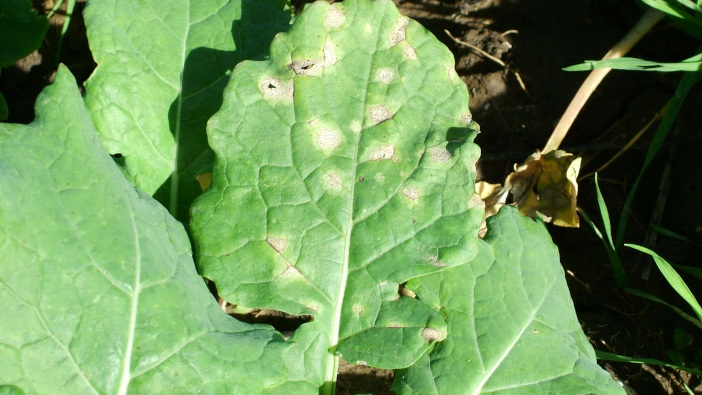Hutchinsons is urging growers to take early control of disease risks in oilseed rape this autumn by using disease risk forecasts to inform their spray programmes.
Light leaf spot and phoma stem canker are the two main autumn diseases in the crop. Phoma comes from the debris and stubble of the previous crop and can cause losses of up to 0.5 tonnes per hectare. Growers can access risk forecasts from the AHDB, which are based on incidence of phoma in 2021, as well as temperature and rainfall from the 1st July to the 26th September.
Spores need 20 days or more of rain from the 1st of August to mature on the stubble. Additional rainfall will cause the release of spores which are able to infect the crop, as long as there are four hours of leaf wetness.
To produce the characteristic leaf spot, it needs an accumulated mean temperature of 120 degrees (6 days at 20˚C, or 10 days at 12˚C, etc). At low temperatures, the migration down the leaf and into the stem may be slow but it is essential to control it before it does, as stem cankers will form later in the season.
In early September, conditions are fairly dry so the phoma risk is relatively low across the country. However, the future risk will be determined by how much further rainfall is seen this month.
Dr David Ellerton, technical director with Hutchinsons, advises regular crop monitoring, especially early sown crops, rather than relying on the forecast which is only an indication of the beginning of infections and may come too late.
Another consideration is the large difference in growth stages between crops and the variation in drilling dates, seedbed moisture and emergence.
Fungicides should be applied once crops have reached a threshold of 10-20% of plants infected. Later drilled crops will be more at risk, so a threshold of 10% would be more appropriate, while more established crops should be sprayed at 20%.
Fungicide programmes should also be influenced by varietal resistance, as found in the AHDB recommended list. The 10% threshold should be applied for the more canker susceptible varieties such as Crome & Crocodile (4). On the other hand, more resistant varieties such as George (9) & Croozer, DK Exsteel, Dazzler, Darling, Respect, DK Expectation & DK Imprint CL (8) are less at risk and a 20% threshold should be applied, as well as being of lower priority when it comes to the order of spraying.

Light leaf spot
The preliminary Light leaf spot (LLS) forecast shows the proportion of oilseed rape (disease resistance rating of 5) estimated to have more than 25% of plants infected in the spring.
It uses previous pod incidence data from the previous season and deviation from the 30-year mean temperature. Low Summer temperatures increase the risk. It also uses historic winter rainfall data and is updated in the spring to reflect deviation in actual weather data.
The forecast is only a guide. As local risk varies, crops should be regularly inspected on a field-by-field basis. The strongest risk assessment can be done by taking samples in polythene bags and keeping them at 10-15 degrees for around five days to bring out symptoms.
There is no threshold for LLS in the autumn, so sprays should be applied at the first sign of the disease.
Recent work from the AHDB has shown that programmes based on prothioconazole are very effective at controlling phoma and increasing yield, while straight tebuconazole can give poorer control and yield response.
Previous work has, however, indicated that products containing both prothioconazole and tebuconazole can outperform straight prothioconazole. Where more growth regulation is required, a higher ratio of tebuconazole should be used and the addition of bixafen will reportedly boost disease control.
The application of tebuconazole will impact what can be used in the spring.
Products containing metconazole are strong growth regulators but are generally weaker on disease control, particularly LLS. Where disease pressure is relatively low or there is an early attack of Phoma, difenoconazole may be considered, although this is weak on LLS so is more appropriate as the early spray for Phoma in a planned two-spray programme. Addition of azoxystrobin to difenoconazole will improve LLS control.


